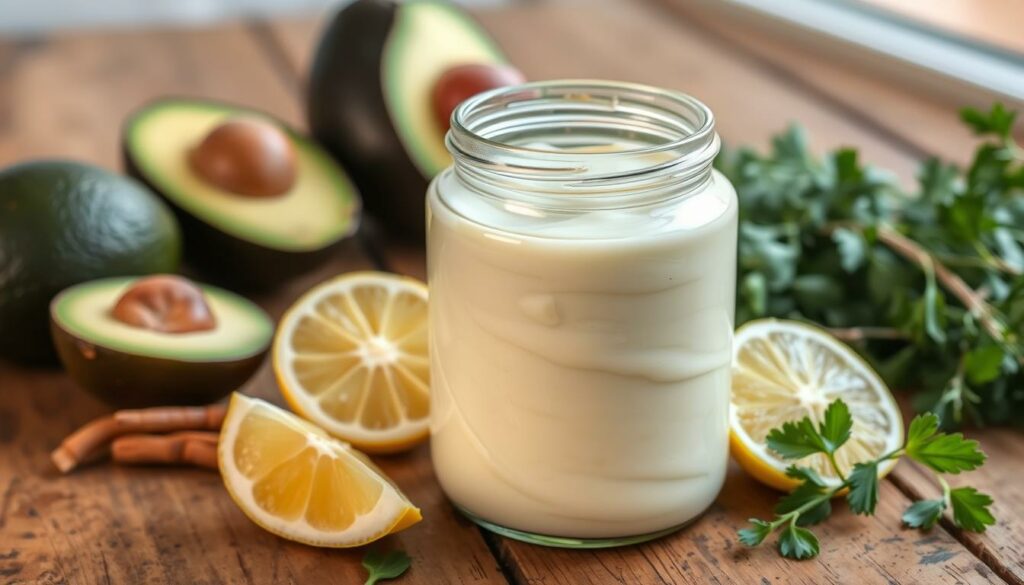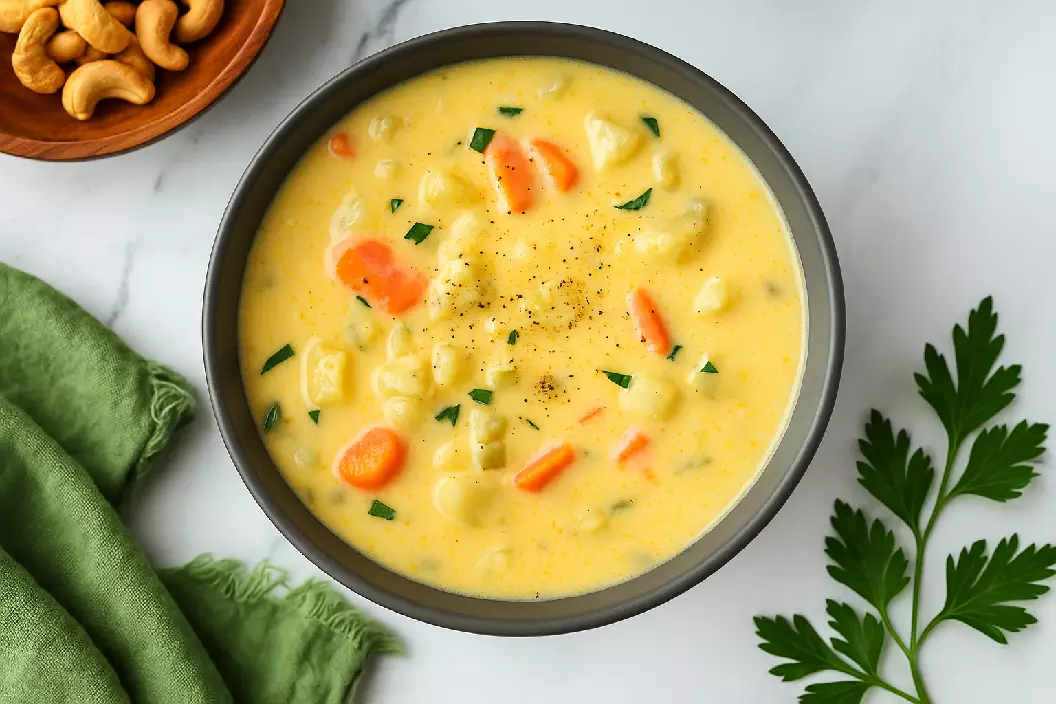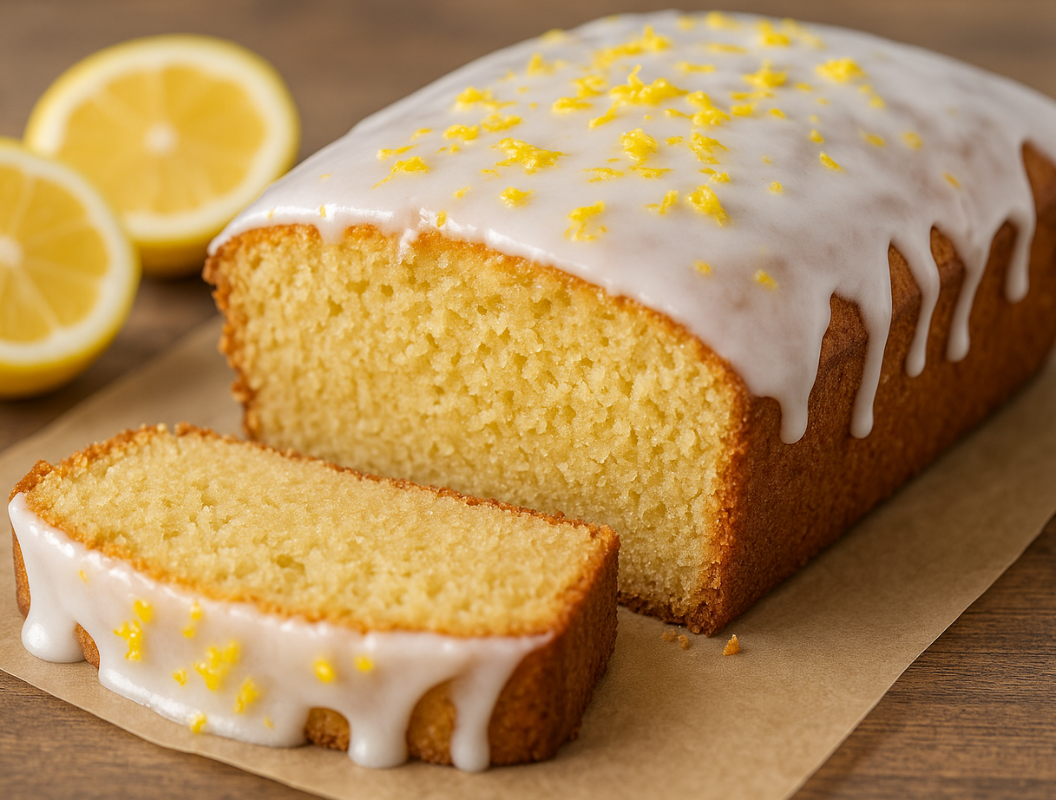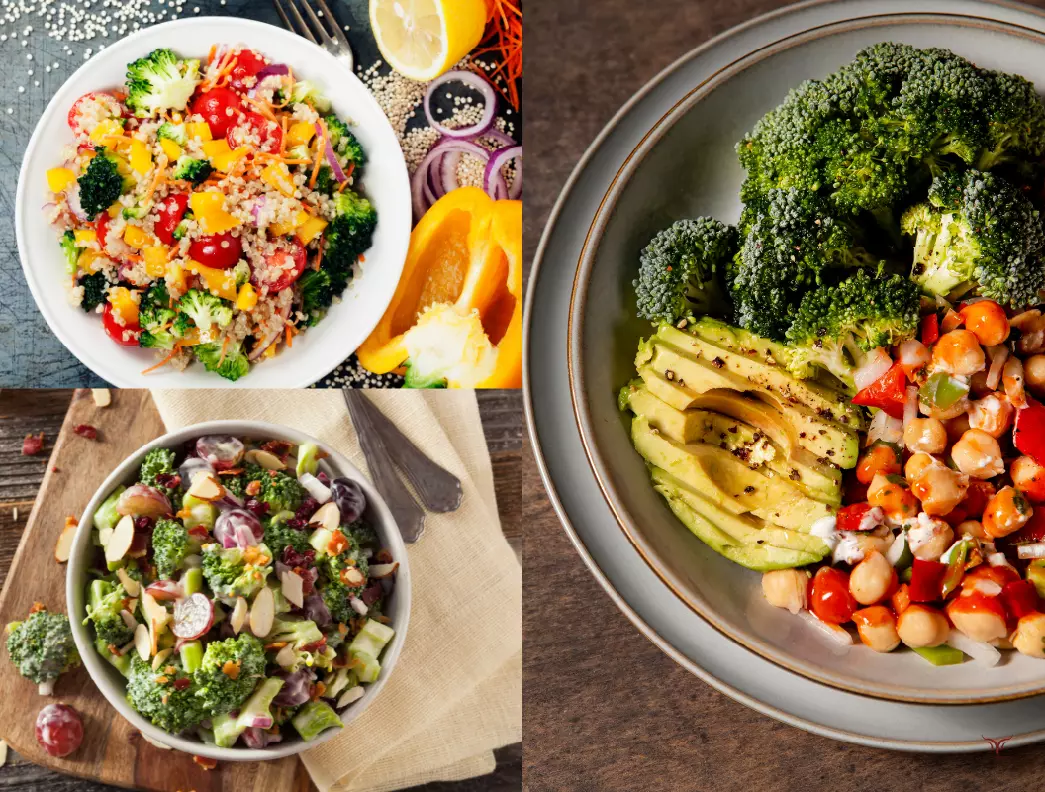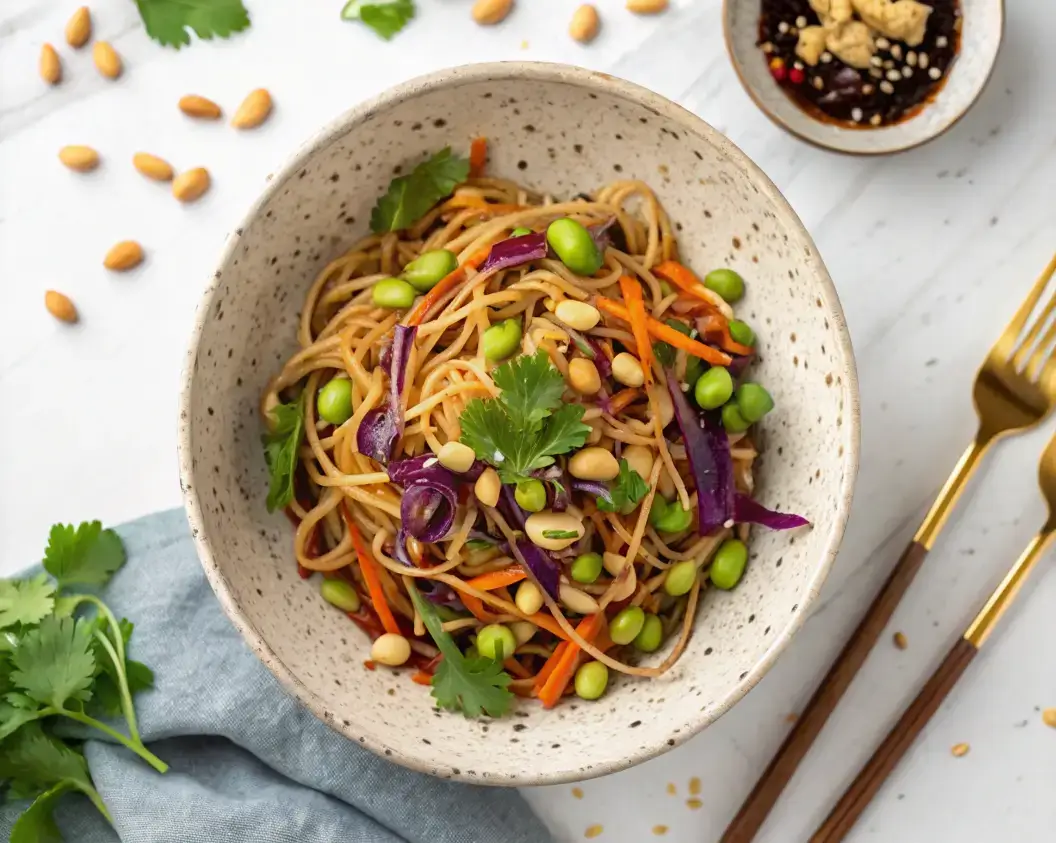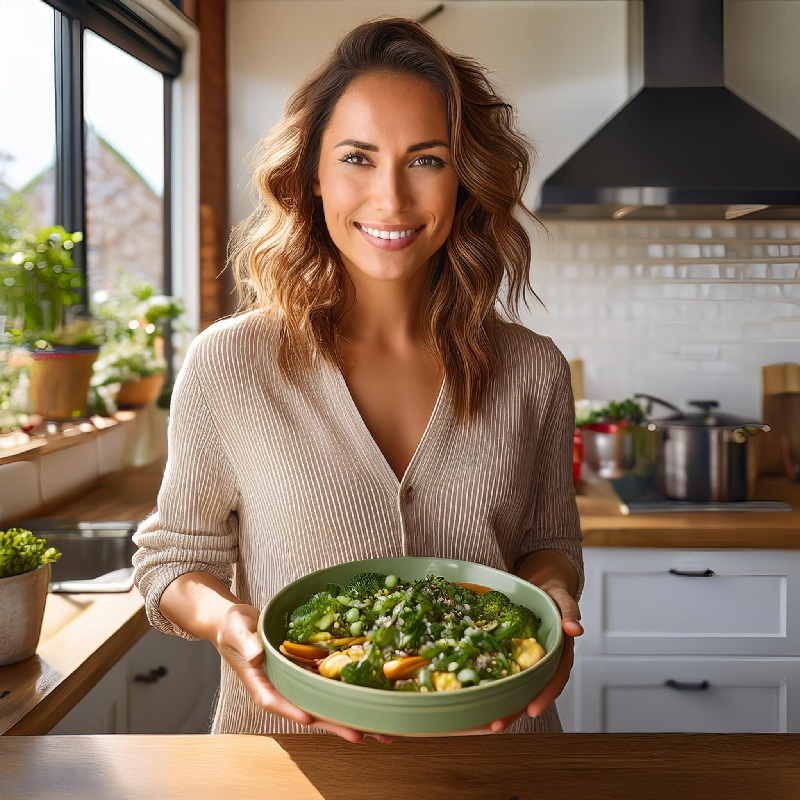Table of Contents
I remember the day I found out how easy it is to make vegan mayo. No more bland store-bought stuff or hard recipes. Just creamy magic in my kitchen.
Making your own vegan mayo is more than just a diet choice. It’s about making a tasty, eggless spread that makes your food better. This vegan mayo recipe will change how you cook in just minutes.
Think about making a creamy spread that’s healthy and easy to make. With five simple ingredients and 1 minute of blending, you get a mayo that’s as good as store-bought. Each serving is full of flavor and nutrients, with only 165 calories.
If you’re into plant-based eating or just want to try new recipes, this vegan mayo is for you. It will become your go-to kitchen item. Get ready to see how easy and tasty dairy-free cooking can be!
Understanding Plant-Based Mayo Essentials
Vegan mayonnaise has changed how we see dairy-free dressing. Since Vegenaise, the first eggless mayo, came out in 1970, plant-based options have changed the condiment world.
Why Make Homemade Vegan Mayo
Making your own vegan mayo has many benefits:
- You control the quality of ingredients
- You can adjust the flavor to your liking
- It doesn’t have preservatives
- It’s cheaper than buying it
Benefits of Dairy-Free Alternatives
Dairy-free mayo is good for your health and the planet. It has no cholesterol and is a sustainable protein source. Each serving has few calories and is full of nutrients.
Key Components of Vegan Mayo
Knowing the key ingredients is key to making great vegan mayonnaise. Unlike traditional mayo, vegan versions use new ingredients:
- Aquafaba: Chickpea brine as an egg substitute
- High-quality plant oils
- Vinegar or lemon juice for flavor
- Mustard for mixing
- Salt and other seasonings
By learning about these ingredients, you can make a tasty, creamy condiment that’s just as good as traditional mayo.
Required Ingredients for Perfect Vegan Mayo
Making vegan mayo is all about the right ingredients. Whether you’re making avocado mayo, aquafaba mayo, cashew mayo, or tofu mayo, quality matters. It’s key for a creamy, tasty spread.
Your vegan mayo can change a lot with the right ingredients. Let’s look at the must-haves for a delicious dairy-free condiment:
- Liquid Base Options
- Soy milk (unsweetened)
- Aquafaba
- Silken tofu
- Cashew cream
- Flavor Enhancers
- White wine vinegar
- Dijon mustard
- Lemon juice
- Nutritional yeast
- Additional Ingredients
- Vegetable oil
- Salt
- Agave nectar or maple syrup
When making vegan mayo, make sure all ingredients are room temperature. This helps with mixing. The mix is usually 1/3 liquid base and 2/3 oil for that creamy feel.
Pro tip: Try different bases like avocado or cashews for unique tastes. Each base adds its own special flavor to your mayo.
Essential Equipment and Tools
To make the perfect vegan mayo, you need the right kitchen tools. These tools help you get a smooth, creamy texture. How you prepare matters a lot, just like the ingredients.
Choosing the Right Blender
Your blender is key when making vegan mayo. A food processor with a small bowl is great for even emulsification. Here are some good choices:
- Immersion blender (fastest method)
- High-speed blender
- Food processor with small attachment
Additional Kitchen Tools Needed
Get ready with these tools:
- Measuring cups
- Spatula
- Mixing bowl
- Whisk
Container Options for Storage
Keep your vegan mayo in an airtight container at room temperature. Or, refrigerate it for longer. Glass jars with tight lids are best for keeping it fresh with neutral oil.
Pro tip: Make sure your ingredients are at room temperature. This helps with smooth blending and perfect emulsification of your vegan mayo.
Vegan Mayo Recipe: Step-by-Step Guide
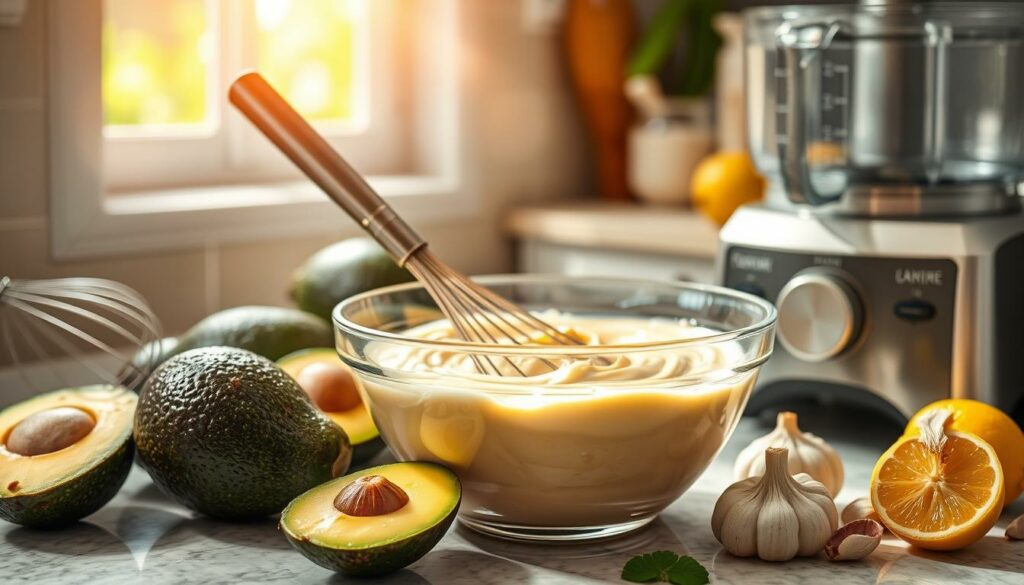
Making your own vegan mayonnaise is simple. You just need a few ingredients and some basic kitchen skills. You can make a tasty, dairy-free condiment in under 5 minutes.
To begin your sunflower oil-based vegan mayo, collect these key ingredients:
- 1/2 cup unsweetened soy milk
- 1 cup neutral sunflower oil
- 1-2 tablespoons rice vinegar
- 1/2 teaspoon fine sea salt
- 1/4 teaspoon Dijon mustard (optional)
The secret to a creamy texture is blending. An immersion blender works best. First, put all ingredients except the oil in a tall, narrow container.
Here’s how to blend for perfect homemade vegan mayonnaise:
- Put the immersion blender at the bottom of the container
- Blend stationary for 15-20 seconds
- Pour in sunflower oil slowly while blending
- Blend for about 30 seconds until it’s smooth
Pro tip: Make sure all ingredients are room temperature. Cold ingredients can make your mayo too thin.
Your homemade vegan mayonnaise will last up to 2 weeks in the fridge. Keep it in an airtight container. Stir it well before each use.
Best Oil Options for Vegan Mayonnaise
Making the perfect vegan mayonnaise begins with picking the right oil. The oil you choose greatly affects the taste, texture, and quality of your homemade spread.
Neutral Oil Choices for Smooth Consistency
Neutral oils are the best base for creamy vegan mayo. Here are some top picks:
- Sunflower oil: Ideal for a light, smooth mayonnaise
- Canola oil: Creates a clean, mild flavor profile
- Light olive oil: Offers a subtle, gentle taste
- Avocado oil: Provides a rich, buttery undertone
Flavor-Enhanced Oil Combinations
Try mixing different oils to enhance your vegan mayo. Adding a bit of white wine vinegar or apple cider vinegar can deepen the flavor. Mix sunflower oil with extra virgin olive oil for a richer taste.
Oils to Strategically Avoid
Some oils can overwhelm your vegan mayo. Avoid these:
- Strongly flavored oils like sesame or coconut
- Rancid or old cooking oils
- Heavily processed vegetable oils
Pro tip: Use an oil that complements soy milk and Dijon mustard. Light sunflower oil pairs well with Dijon’s tangy flavor.
Troubleshooting Common Mayo Issues
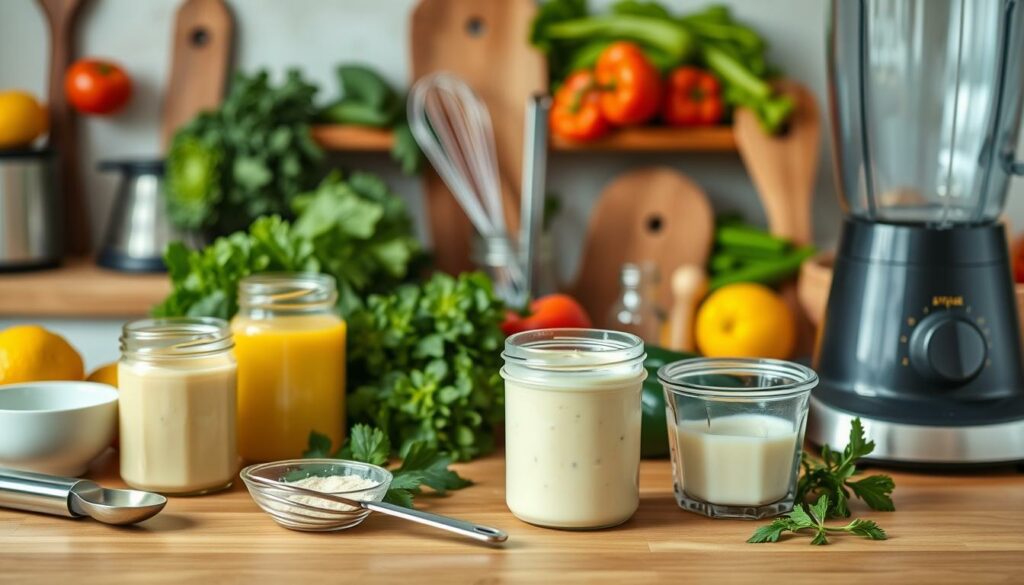
Making the perfect vegan mayo can be a challenge. When using an immersion blender, you might face a few common problems. Knowing these issues can help you make a smooth, creamy mayo every time.
Here are the most frequent problems you might encounter:
- Separation during blending: This occurs when ingredients don’t emulsify correctly
- Inconsistent texture or thin consistency
- Unpleasant flavor when using olive oil
To fix mayo separation, try these quick fixes:
- Ensure all ingredients are at room temperature
- Add liquid slowly while blending
- Use a neutral oil instead of strong-flavored olive oil
If your immersion blender isn’t making the right consistency, try these techniques:
- Blend ingredients in a tall, narrow container
- Use steady, slow blending motions
- Stop and restart if mixture isn’t thickening
Temperature is key in mayo making. Cold ingredients can stop emulsification. So, always let ingredients warm up to room temperature before mixing.
Storage Tips and Shelf Life
Keeping your homemade vegan mayo fresh is key. The right storage methods can keep it creamy and tasty. It also ensures it stays safe to eat.
Proper Container Selection
Use an airtight glass or high-quality plastic container for your mayo. Glass is best for keeping the taste fresh, thanks to avocado oil or canola oil. Look for containers with:
- Tight-sealing lids
- Clear material for easy monitoring
- Size appropriate for your batch
Temperature Considerations
Keeping your mayo in the fridge is essential. Aim for a temperature between 35°F and 40°F. This cold keeps bacteria at bay and keeps the mayo’s texture.
Signs of Spoilage
Be on the lookout for these signs that your mayo has spoiled:
- Unusual or sour smell
- Significant color changes
- Visible mold growth
- Excessive liquid separation
Homemade vegan mayo usually lasts 1-2 weeks in the fridge. Always use clean utensils to scoop it. This helps prevent contamination and keeps it fresh longer.
Creative Ways to Use Your Vegan Mayo
Your homemade vegan mayonnaise is more than just a sandwich spread. It’s a creamy, flavorful gem that can change many dishes. It makes your cooking better.
Here are some exciting ways to use your vegan mayo:
- Create zesty salad dressings by mixing in fresh lemon juice
- Use as a dipping sauce for roasted vegetables
- Blend with sea salt and herbs for a quick aioli
- Spread on grilled sandwiches for extra moisture
- Mix into potato or pasta salads for a creamy base
Try adding unique ingredients to change the flavor. A little sriracha makes it spicy. Fresh herbs like dill or basil add a vibrant taste.
Use your vegan mayo to make different sauces. Mix it with garlic, nutritional yeast, and lemon juice. This makes a tangy sauce great for veggies or dips.
With these ideas, your vegan mayo becomes a must-have in your kitchen. It adds flavor, nutrition, and variety to many dishes.
Flavor Variations and Add-ins
Turn your basic vegan mayo into a fun adventure with exciting flavors. The secret is using room temperature ingredients and a neutral oil. This lets other flavors stand out.
Begin your flavor journey with these tasty vegan mayo variations:
- Garlic Aioli: Add 2-3 roasted garlic cloves for a rich, aromatic twist
- Herb-Infused Mayo: Mix in fresh chopped herbs like dill, basil, or chives
- Spicy Mayo: Incorporate hot sauce or sriracha for a kick of heat
- Chipotle Mayo: Blend in chipotle peppers in adobo sauce
- Lemon Herb Mayo: Add fresh lemon zest and thyme
When making flavor variations, add ingredients slowly and taste as you go. A neutral oil is the best base for these creative additions. You can change the flavor intensity by adding more or less of the add-ins.
Pro tip: Start with small batches when trying new vegan mayo flavors. This way, you can fine-tune your recipe without wasting anything. Keep your flavored vegan mayo in the fridge and use it within 5-7 days for the best taste.
Expert Tips for Perfect Texture
Making thick and creamy vegan mayo needs precision and kitchen skills. Learning the right techniques will help you make a top-notch condiment. You can do this with a food processor or blender.
Temperature Matters
Getting vegan mayo right depends on the temperature of your ingredients. They should be at room temperature for the best emulsification. Cold ingredients can stop your mayo from getting thick and creamy.
Emulsion Techniques
Here are key tips for emulsion when using a food processor:
- Start with slow blending speeds
- Pour sunflower oil in a thin, steady stream
- Blend continuously to ensure smooth integration
Thickness Adjustments
Getting the right mayo thickness is an art. If it’s too thin, try these:
- Add more oil slowly
- Incorporate additional plant-based protein (like silken tofu)
- Allow the mayo to rest in the refrigerator for firming
Remember, making the perfect vegan mayo takes practice!
Conclusion
Your homemade vegan mayonnaise is more than a dairy-free dressing. It’s a journey that turns simple ingredients into a creamy, tasty spread. With just 5 minutes of prep and 7 basic ingredients, you can make a spread that’s as good as the expensive ones.
Making your own vegan mayonnaise is super flexible. You can try different oils like avocado or canola, change flavors, and make it fit your diet. You get a healthy condiment with 82 calories per serving, no cholesterol, and little saturated fat.
Choosing homemade vegan mayonnaise also helps the planet. It cuts down on greenhouse gas emissions and water use from traditional egg farming. Every batch of vegan mayo is a step towards eating better without losing flavor or quality.
We encourage you to keep exploring plant-based cooking. Share your vegan mayo stories and inspire others to try it. Your kitchen is now a place for fun and creativity!
FAQ
What makes vegan mayo different from traditional mayonnaise?
Vegan mayo doesn’t have animal products. It uses plant-based stuff like aquafaba, soy milk, or cashew cream instead of eggs. It gets its creamy texture from neutral oils and special emulsifiers, just like regular mayo.
How long can homemade vegan mayo be stored in the refrigerator?
Homemade vegan mayo lasts 5-7 days in the fridge. Keep it in an airtight container. Always check for spoilage signs like bad smells or separation before using.
Can I use different types of oil in my vegan mayo recipe?
Yes, you can try different oils like sunflower, canola, or avocado. But, avoid strong oils that might change the taste too much. A mild oil is best for a classic mayo flavor.
What can I use as a base for vegan mayo if I don’t have aquafaba?
You can use silken tofu, cashew cream, soy milk, or pureed avocado as a base. Each will give your mayo a unique texture and taste.
Why isn’t my vegan mayo thickening up?
Issues with thickening can happen for a few reasons. Maybe your ingredients weren’t at room temperature, or you added oil too fast. Use an immersion blender or food processor and slowly add oil while blending for a thick mayo.
Is homemade vegan mayo healthier than store-bought?
Homemade vegan mayo is often healthier because you choose the ingredients. You can avoid preservatives and additives found in many store brands. Plus, you can add healthy oils and nutritional yeast for extra nutrition.
Can I make flavored variations of vegan mayo?
Yes! You can make many flavors by adding garlic, herbs, sriracha, or lemon juice. Try different seasonings to find your favorite flavors for various dishes.
How can I fix a mayo that has separated or broken?
If your mayo separates, add a tablespoon of hot water or vinegar while blending. Start with a small amount of broken mayo in a clean bowl. Slowly add the rest while blending to fix it.
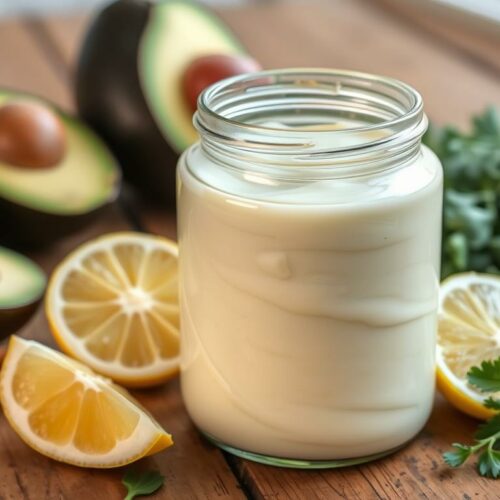
Creamy Vegan Mayo Recipe: Dairy-Free & Delicious
Ingredients
- 1/2 cup unsweetened soy milk
- 1 cup neutral sunflower oil
- 1-2 tablespoons rice vinegar
- 1/2 teaspoon fine sea salt
- 1/4 teaspoon Dijon mustard optional
Instructions
- Ensure all ingredients are at room temperature
- Place all ingredients except oil in a tall, narrow container
- Position immersion blender at the bottom of the container
- Blend stationary for 15-20 seconds
- Slowly pour in sunflower oil while continuing to blend
- Blend for approximately 30 seconds until smooth and creamy
Notes
- Keeps for 1-2 weeks in the refrigerator
- Must be stored in an airtight container
- All ingredients should be room temperature for best results
- Can be customized with different flavor variations (garlic, herbs, spicy, chipotle, lemon)
- Different bases can be used (aquafaba, silken tofu, cashew cream)
- Various neutral oils can be substituted (canola, light olive oil, avocado oil)
Rate this recipe and share your results!
There are no reviews yet. Be the first one to write one.

